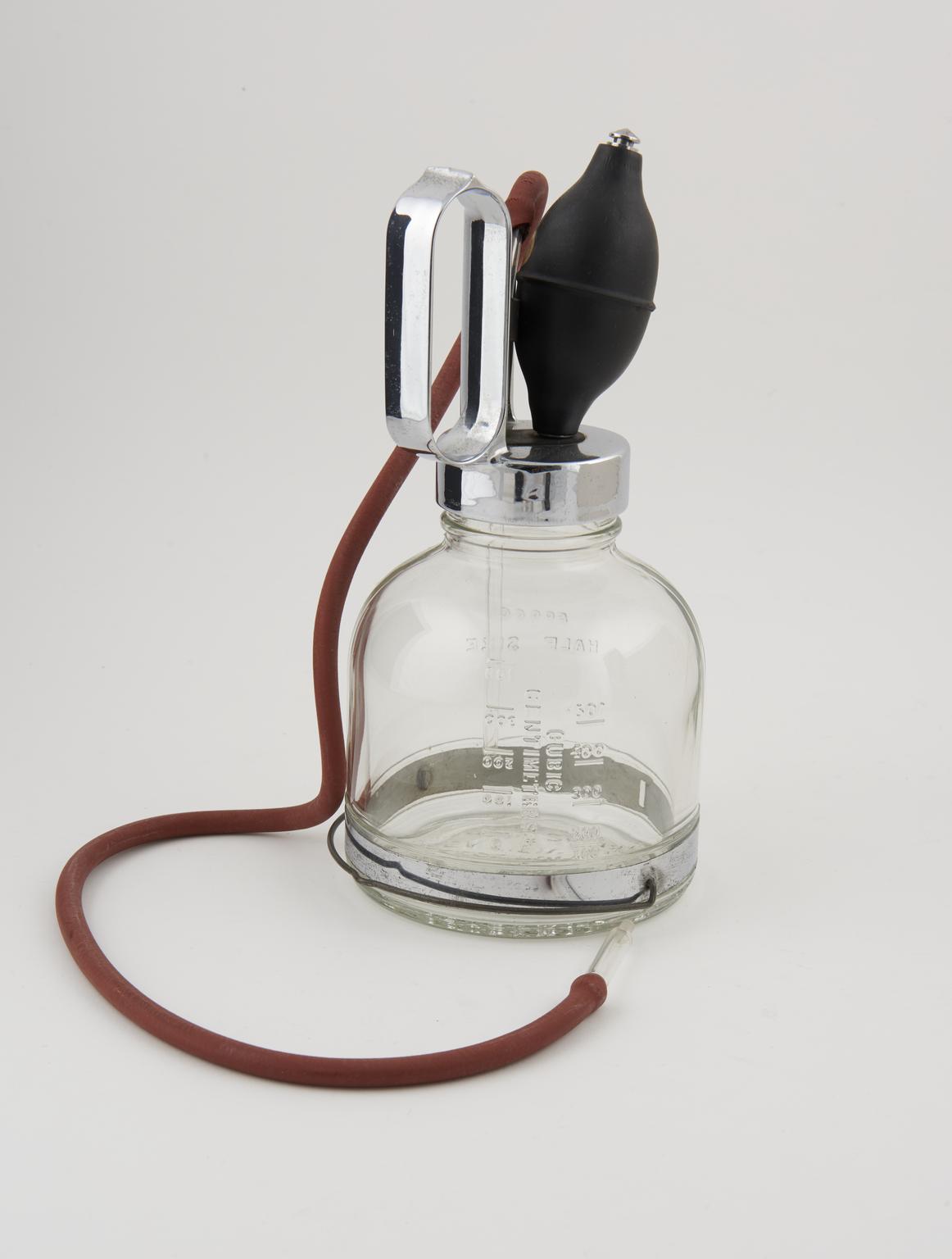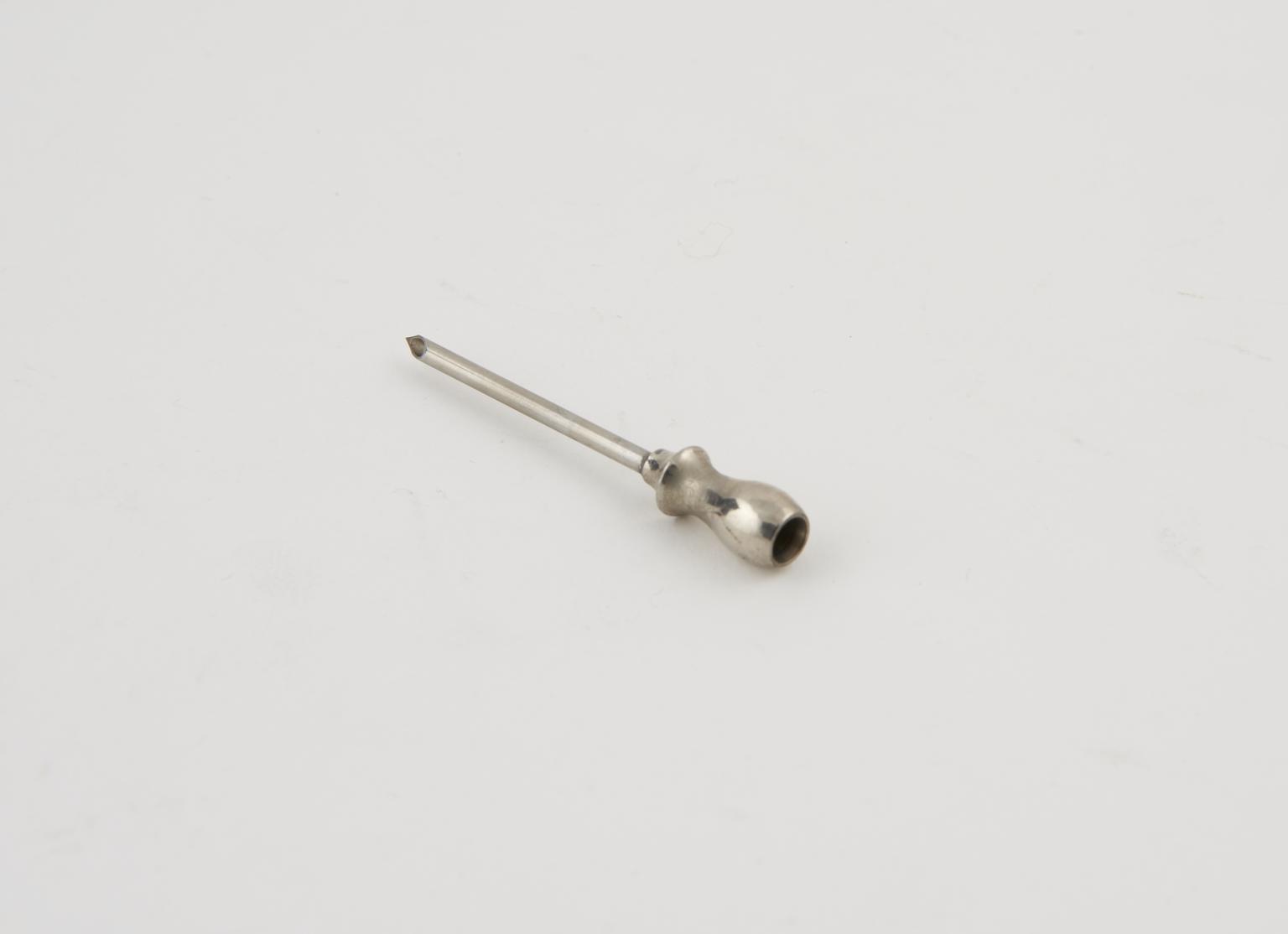
Blood transfusion set, United States, 1933-1943
Blood transfusion set, adapted for taking blood, by Baxter Laboratories Inc USA, circa 1938.
- Object Number:
- 1996-278/111/1
- Image ©
- The Board of Trustees of the Science Museum



Blood transfusion set, adapted for taking blood, by Baxter Laboratories Inc USA, circa 1938.
A high number of civilian and military casualties required lifesaving blood transfusions during the Second World War (1939-1945). This prompted significant international developments in the transfusion and storage of blood. This blood transfusion set was made by Baxter laboratories in the US. It was adapted for taking blood as well as transfusing it. This removed the need to transfer blood from one container to another for infusion. A needle was attached to the rubber tubing. 10cc of sodium citrate was drawn into the glass jar (called a ‘vacoliter’) by pumping the rubber bulb. Sodium citrate stopped the blood clotting, allowing it be stored for several days. The needle was inserted into a vein in the donor’s arm and blood was drawn into the vacoliter, again by pumping the rubber bulb. It was then ready for transfusion.

Blood transfusion set, adapted for taking blood, by Baxter Laboratories Inc USA, circa 1938.

Trocar from blood transfusion set, adapted for taking blood, by Baxter Laboratories Inc USA, circa 1938.


